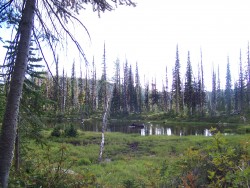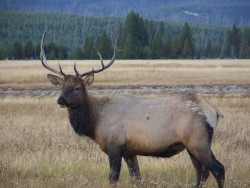So you’ve drawn an elk tag and your faced with millions of acres of wilderness. Now what? Start by studying a topographical map of the area you intend to hunt and break it up into three main parts; Ridges, Valleys and creek bottoms. Not all valleys have creek bottoms but all creek bottoms are in valleys. Look for small flat areas amidst the towering peaks and cliffs. Some of the best elk holding hot spots are only a few hundred yards wide and give you a focus point to get started.
Ridges
Ridges can offer grassy feeding areas amidst heavy timber where elk like to feed. Finding ridge tops adjacent to flat water-logged creek bottoms are an ideal place to still hunt through during first and last hours of the day especially in warm weather. Elk will use timber-covered ridges to travel between feeding and bedding sites and if there are fresh tracks and droppings here it could be a good place to sit and wait.
Valleys
Valleys offer seclusion for elk mid-day especially where the bottom is wide and flat. The wet areas may show up on your map with the color white and if it’s really wet it may be symbolized with grass hummocks. Elk congregate in these areas especially during the September Rut through early November. If the area is flat and wet, keep the wind in your face and walk through the area particularly if it holds the head waters of a creek. The heaviest elk use occurs right where the highest point of a creek begins. Finding these locations is the most important thing you can do when hunting elk for the first time in a new area.

Creek Bottoms
Big bulls are drawn to creek bottoms in warm weather for a variety of reasons. These areas have the most dense vegetation and variable winds throughout the day and are frequently 10 or 15 degrees cooler than the surrounding hillsides. Hunting creek bottoms must be done with extreme awareness of the wind. These areas are mid-day hotspots for bulls. Try sitting and listening from about half way down a ridge that leads to creek bottoms. If elk are present you will often hear cows mewing or a low bugle from a bull even as late as early November.
Locating elk and keeping the wind in your face as you sneak into the area can be the most effective hunting tactic for any part of the hunting season. Long rifle shots exceeding 300 yards in the wide open can happen so be ready for those but remember, many bulls are killed at ranges of less than 100 yards with off-hand shots in dark timber. Bow hunters should be prepared for steep angles and tight shots through lodge pole pine trees by practicing well before hunting season.

By shrinking vast expanses of wilderness into smaller land features you’ll increase your odds of turning elk tags into elk steaks.